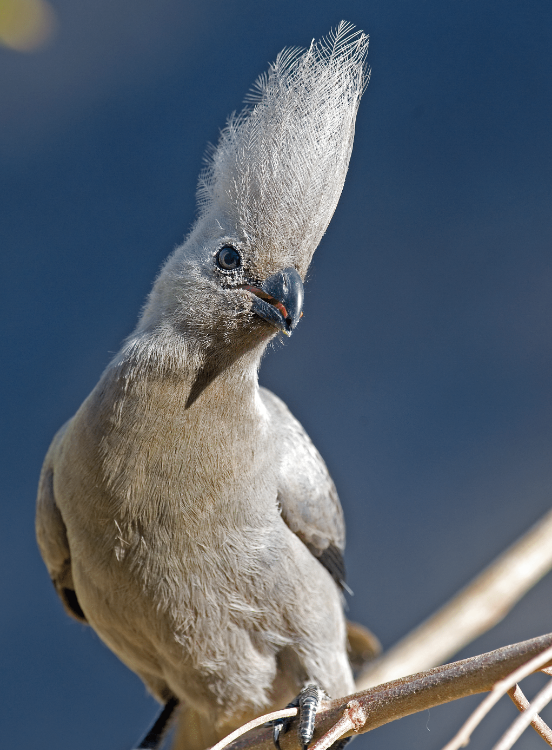Autumn in Namibia – Different each time round
August 17, 2012The Rhino – a denizen of Damaraland
August 17, 2012by Pompie Burger
Once a year, responding to unknown stimuli (could be ultra sound, a sniff in the nose, genetic inbreeding, rumours of Romans in Walvis Bay), thousands of flamingos take off from the Walvis Bay Lagoon.
And no, they’re not heading for Rooibank Airport. They’re departing on their annual journey to the Etosha Pan to do their annual breeding. Why Etosha? And why at that specific time of year? And why during the night? Nobody knows.
There is much speculation as to why this nomadic trip takes place; this is something we still have to research and determine, but it still amazes thousands of birders and nature lovers.
Be that as it may, this event is one of the most impressive bird migrations in the region. The flamingos arrive in November at the earliest, mostly during January and February, depending on the rainfall in the interior.
What we do know is that the trip takes place at night; and that it takes them plus-minus six hours to complete.
Their route takes them up northwards along the coast to an area almost directly west of Etosha, where they turn right and head straight for the Pan, probably to avoid the various roadblocks en route.
According to Steve Brain, they fly quite low (once, while camping in the area, he heard them flying over the course of the Hoanib River and colliding into fibre-optic cables on the way). His theory, among others, is that they follow the Ugab, Huab and Hoarusib river systems.
Why do they take the trouble to fly north-east when everybody else migrates westwards during the summer holidays? Probably to avoid the hordes of people from Windhoek on their annual exodus to the coastal towns of Swakopmund and Walvis Bay. Or perhaps to avoid the quad-bikers and windsurfers?
There are four species of flamingo worldwide. Relatively small populations of two occur in the Andes Mountains.
The other two – our Greater Flamingo (Phoenico ruber) and Lesser Flamingo (Phoenica minor) – both have a relatively large distribution, and also occur in larger populations.
The Lesser variety with its smaller distribution is found in Africa and India, and the Greater one on all continents except Australia and Antarctica. As far as size is concerned, the Lesser Flamingo is about one third smaller in length and weight than the Greater Flamingo.
Flamingos have a unique feeding method. Their lower jaw (mandible) hosts an enormous tongue that is much larger than the upper jaw (maxilla), which acts as a lid.
Water containing food is filtered through small holes in the mouth. The Lesser Flamingo feeds closer to the water surface, while the Greater Flamingo feeds from the bottom up, probably because these birds have longer necks! As a result, the two species can co-exist in the same area.
Interestingly enough, one of the Roman Emperors served flamingo tongues as a delicatessen at his banquets.
The bright-pink colouring of flamingos is caused by the brine shrimps in their diet. I am talking here about the flamingos, not the emperors.
The movement of these two species depends largely on rainfall at their breeding spots, these being Etosha and the Sua Pans in Botswana. You will find up to 27 000 pairs in Etosha, (near Ekuma and Otjigombo in the north), having dispersed with the up to 38 000 non-breeding pairs at Walvis Bay. The success in breeding varies large according to the availability of water in the pans. Over the past 40 years there have been 17 breeding attempts, with only five being successful.
Apart from the availability of water and food, nest desertion is the main reason for unsuccessful attempts. The reason for the desertions is predation, humans passing overhead in hot-air balloons, and low-flying aircraft. This is why, unfortunately, we have no aerial pictures of the event.
This article appeared in the Autumn 2012 edition of Travel News Namibia.
All photos: Mike Lloyd. Mike is a passionate guide and photographer living at the Namibian coast. He has countless opportunities to witness life in the dunes and waters – and he uses them.
Facebook: Mike Lloyd or Sand and Sea 4×4 tours
About the author:
Based in Windhoek, Pompie Burger is an orthopaedic surgeon whose part-time passion is photography, in particular wildlife, and specifically birds. This regularly takes him to the most remote corners of the country, resulting in riveting images and articles.
Pompie is the author and photographer of the coffee table book Birds of Namibia, which was published in 2008. The book contains articles and photographs which attest to the insight and knowledge of an accomplished observer.
Read more of his articles in our Birding Section.




